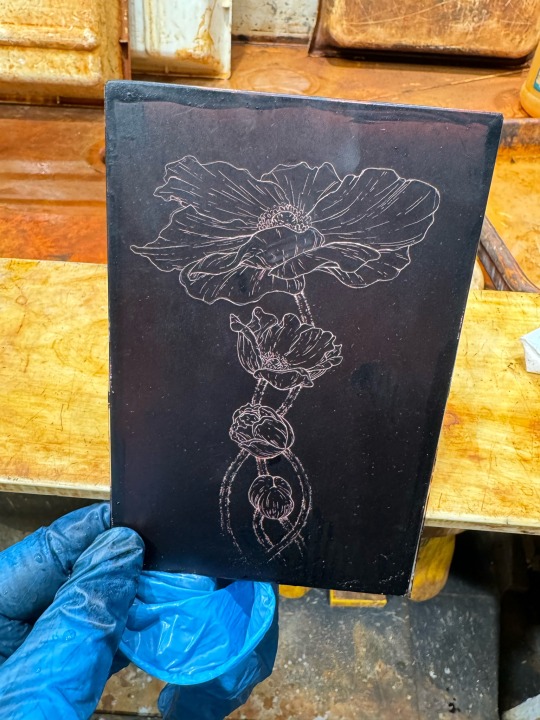#multi processing
Explore tagged Tumblr posts
Text
The credit card fee victory is a defeat

I'm on tour with my new, nationally bestselling novel The Bezzle! Catch me next weekend (Mar 30/31) in ANAHEIM at WONDERCON, then in Boston with Randall "XKCD" Munroe (Apr 11), then Providence (Apr 12), and beyond!

The headline was pure David and Goliath: America's small businesses had finally triumphed in their 20-year litigation campaign against Visa and Mastercard over price-gouging on fees, and V/MC were going to cough up $30B as reparations:
https://edition.cnn.com/2024/03/26/economy/visa-mastercard-swipe-fee-settlement/index.html
But if you actually delve into that settlement, the victory gets very hollow indeed. Here's the figure that didn't make the headline: as a part of this settlement, the sky-high fees merchants pay to process your credit-card transaction are going up by 25%:
https://www.creditslips.org/creditslips/2024/03/the-proposed-credit-card-interchange-settlement.html
The payments system is a hellish complex, rotten cartel, dominated by a handful of firms who have raised their already-high fees by 40% since the start of covid:
https://prospect.org/power/2023-02-07-small-business-credit-card-fees/
These companies who take 2-5% out of virtually every dollar exchange in the American company are wildly profitable, but their aggregate profits are still much lower than the profits of all the merchants they prey upon. More: the combined market capitalization of every company that accepts credit-cards is orders of magnitude larger than the payment processing companies. If we're just talking about sheer economic muscle, the "Goliath" here is "all the companies" and the "David" is "the three companies that process payments for them."
So, how is it that these puny middlemen are able to run circles around this massive retail sector? To learn the answer, you need to consider the fine technical details of the lawsuit and the settlement. That's something few of us are capable of doing on our own, because – as is ever the case with finance – the whole system is wreathed in an enormous amount of performative complexity. It's what finance bros call "MEGO," for "My Eyes Glaze Over." Finance loves things that are made complicated so that they'll be hard to understand – because so many of us will assume that they are hard to understand because they are complicated and just "leave it to the experts."
Thankfully, not all of the experts are on the side of finance. When I want a cheat-sheet for the lies buried in Uber's balance sheet, I look to Hubert Horan:
https://horanaviation.com/publications-uber
And when I want to understand credit markets, I go to Adam Levitin and his co-authors at the indispensable Credit Slips blog – and the Credit Card Interchange Settlement is no exception:
https://www.creditslips.org/creditslips/2024/03/the-proposed-credit-card-interchange-settlement.html
Formally, the fight over credit-card fees is over "interchange fees" – the fees charged to a merchant's bank by Visa and Mastercard. But of course, these fees are passed on to the merchants. If you've ever shopped for a credit-card, you'll know that some cards offer massive rebates to consumers (especially wealthy consumers with great credit scores). These gifts don't come out of V/MC's bottom-line: every time you use one of those Platinum/Emerald/Unobtanium cards, V/MC levy an even higher interchange fee. So ultimately, when a wealthy customer with a "good" credit card shops at a merchant, the merchant ends up paying more to process their payment.
But merchants aren't allowed to charge that back to their customers – and that's the crux of the lawsuit. It's why American merchants pay the highest interchange fees in the developed world.
Enter the $30b settlement. Under its terms, average interchange fees will go down by 7 basis-points (0.07%) over the next five years, while all fees will go down by 0.04% over three years – a reduction of about $3b/year. Additionally: merchants will now be able to levy small, extremely limited surcharges based on either the type of card or the card brand (e.g., "We charge a fee for Visa" or "We charge a fee for gold cards"). If merchants are able to levy these fees and figure out how to max them out, they stand to make another 3b/year.
In other words, the $30b settlement comes from $15b in guaranteed savings and $15b in possible savings, for just five years – while V/MC will continue to charge more than $100b/year in interchange fees.
This litigation began in 2005, with merchants outraged over the sky-high average interchange fee of 1.75%. Today, after the settlement, those fees have climbed by 25%, to 2.19% – and they'll start climbing again after just five years. A 20-year fight over high fees resulted in a victory in which the fees are even higher.
How did this happen? Levitin gives us some tantalyzing hints. Over the two decades of litigation, the credit card cartel were able to peel off different groups of merchants and settle with them separately. Some of those settlements were vacated by courts, and other ones are still pending, but fundamentally, the merchants were not unified in the way the credit-card companies are.
This shouldn't surprise anyone. Hundreds of thousands – millions? – of merchants are unable to coordinate strategies in the way that just two credit-card companies can. Indeed, when you have hundreds of thousands of companies, that represents many, many different kinds of businesses, each of which has different kinds of customers and different labor, inventory, cash-flow and profitability specifics.
But as an industry grows more concentrated, all the firms within that industry converge on a single, homogeneous style of operations. Walmart operates very differently from the mom-and-pop shops it forced out with predatory pricing and sweetheart deals with wholesalers – but Costco, Walmart and Sam's Club are all remarkably similar to one another. As a shopper, that means that if have needs that aren't well-served by a big box store, you're out of luck – and it means that a credit-card settlement that works for Walmart will probably work equally well for Costco and Sam's Club.
Think of the mobile phone duopoly of Apple/Google. These two "competitors" have nearly identical ways of dealing with their suppliers – both charging 30% fees for processing payments (and yes, that's a racket that makes Visa/Mastercard look like pikers). These two "competitors" are also one another's most important business-partners: the single largest transaction either company makes every year is with the other – the $26B that Google pays Apple every year to be the Ios and Safari default search engine, through which Apple exposes every one of its customers to Google's incredibly invasive, continuous surveillance.
Speaking of surveillance: consider the surveillance advertising duopoly of Google/Facebook. Not only do these companies extract the nearly identical (sky-high) fees from advertisers and dribble out the nearly identical (miserly) payouts to publishers – they also illegally collude to rig the advertising market, dividing it between themselves:
https://en.wikipedia.org/wiki/Jedi_Blue
The economists' term for this is the "collective action problem." It's a problem we want corporations to have. The problem with monopolies and cartels isn't merely that they're "too big to fail" and "too big to jail" – it's that a handful of companies can form a cartel to capture their regulators:
https://pluralistic.net/2022/06/05/regulatory-capture/
The surveillance industry is unified; the surveilled are not. The rewards from surveillance are concentrated. The costs of surveillance are diffused. This is as good a working definition of corruption as you could ask for: conduct that produces concentrated gains and diffuse losses.
Our generations-long failure to enforce antitrust law created monopolies that rippled out through whole supply chains. As David Dayen described in his brilliant 2021 book Monopolized, it's the story of US health industry:
https://pluralistic.net/2021/01/29/fractal-bullshit/#dayenu
First, pharma companies merged to monopoly and started to gouge hospitals on drug prices. So hospitals formed regional monopolies that could resist these pricing demands – and then turned around and started gouging insurance companies. So insurance companies merged, too. Every corner of health-care is now a monopoly or a cartel – from pharmacy benefit managers to hospital beds:
https://pluralistic.net/2022/01/05/hillrom/#baxter-international
The only parts of the industry that aren't concentrated are the parts that can't concentrate: patients and health-care workers. The monopolized health care sector reaps the concentrated gains, and the patients and workers pay the diffused costs. Those costs are diffused, but they're still substantial – a literal matter of life or death:
https://kffhealthnews.org/news/article/investors-private-equity-nonprofit-nursing-homes-quality-of-care/
Monopolization lets businesses solve their collective action problem, so they can run circles around less concentrated, less organized sectors. But concentration also lets companies solve the collective action problem of lobbying governments and capturing their regulators. A concentrated industry can maintain message discipline in front of regulators and legislators. A diffuse sector will always have credible defectors who'll say, "No, we can absolutely function with tighter controls – my competition is bullshitting you and I have receipts to prove it."
The surveillance industry's massive concentration is why America can't seem to pass a federal consumer privacy law. The last consumer privacy law Congress passed was 1988's Video Privacy Protection Act, a law that bans video-store clerks from telling anyone which VHS cassettes you're renting. But federal law is effectively silent on every other kind of invasion – your ISP, your TV, your car, your phone, your medical implant, your dishwasher and your smart speaker can all harvest your data, charge you for the privilege and sell it to anyone, for any purpose.
That silence didn't come cheap: whenever Congress moots a privacy law, the concentrated surveillance industry is all on the same page for the ensuing lobbying blitz, which it can afford thanks to the massive profits that an industry reaps when it eliminates "wasteful competition."
This is a point that leftists sometimes miss about competition law. The point of competition isn't merely to discipline companies into finding more efficient ways to run their businesses so that their prices go down. Sure, that's sometimes a good thing for the public.
But there's plenty of commercial conduct that we don't want to improve – rather, we want to extinguish that conduct. We don't want more efficient commercial surveillance – we want no commercial surveillance.
Without competition, an industry can outmaneuver the government. Think of IBM: the DOJ sued IBM for antitrust violations from 1970 to 1982. For 12 consecutive years, IBM spent more on lawyers to fight the DOJ's Antitrust Division than the DOJ spent on all the lawyers it employed to fight every antitrust violation in the country. IBM literally outspent the US government, year after year, for 12 years! That let them delay the DOJ's breakup long enough for Ronald Reagan to be elected, and then Reagan dropped the suit.
This doesn't just effect customers for a monopoly's products – it also (and especially) effects the workers for that monopoly. When employers don't have to compete for labor, they can pay workers less and save money they might otherwise have to pay for benefits and workplace safety. Those additional profits can be plowed into lobbying against pro-union laws, and to pay the eye-watering sums charged by scumbag union-busting law firms.
Look at the companies who've gone to the Supreme Court to get the National Labor Review Board abolished: these are giant corporations from heavily concentrated sectors with little competition to erode their profits. And while Tesla, Trader Joe's and Amazon all have very different businesses, they're all similar enough that none of them sees an advantage to courting workers by offering a unionized shop:
https://newrepublic.com/article/179165/musk-supreme-court-nlrb-labor
It's not just leftists who fail to grasp the relationship between competition and the ability of regulators to do their job. Libertarians miss this, too. Even if you're a fully Fountainhead-poisoned freedom-to-contract hobgoblin, you still want a government that can enforce those contracts and defend the property rights they invoke. For a government to force a corporation to abide by its contractual obligations, that government has to be more powerful than the corporation it is charged with policing. Which means that however large you're willing to let a monopoly or cartel grow, you're going to have to tolerate a government that's even larger:
https://pluralistic.net/2023/02/05/small-government/
The "$30b win" for America's merchants is, in fact, a loss. 20 years of litigation over high fees, and the fees are now much higher. But that loss is surely unevenly distributed. Walmart and Amazon and other retail giants are going to be able to bargain for all kinds of off-the-books rebates, promotions, and other sweetheart deals, meaning that they'll have even more unfair advantages over smaller, more disorganized retailers. That means more of those mom-and-pops will vanish, leaving shoppers with less choice and higher prices – and workers with less choice and lower wages.
The lesson of 40 years of pro-monopoly policy couldn't be clearer: you can either have an economy that is regulated by lawmakers who are at least nominally transparent and democratically accountable, or you can have an economy regulated by totally unaccountable and opaque monopolists. Fail to do the former, and you will always end up with the latter.

If you'd like an essay-formatted version of this post to read or share, here's a link to it on pluralistic.net, my surveillance-free, ad-free, tracker-free blog:
https://pluralistic.net/2024/03/28/concentrated-benefits/#diffuse-harms
#pluralistic#credit cards#Credit Card Interchange Settlement#Credit Card Interchange#payment processing#payments#network fee#steering#multi-district litigation#monopoly#regulatory capture#cartels#concentrated benefits#diffuse harms#adam levitin#credit slips
211 notes
·
View notes
Text
It’s…Not a One-Shot Anymore 🫠
17,678 words and counting. When this baby is off it’s leash—mama’s gonna pop that Prosecco (Frfr)

#whoever said smut is easy—I want my money back#halsin x oc#The Tea (Writing)#The Tea (Misc)#smut with plot#instinct fic#writing#in the process#demisexual oc#halsin v carding tempest#d&d polyamory#freedom loving wood elves#culture shock#patriars of baldur's gate#warlock x druid romance#multi chap fic#one shot no more mi amor
19 notes
·
View notes
Text

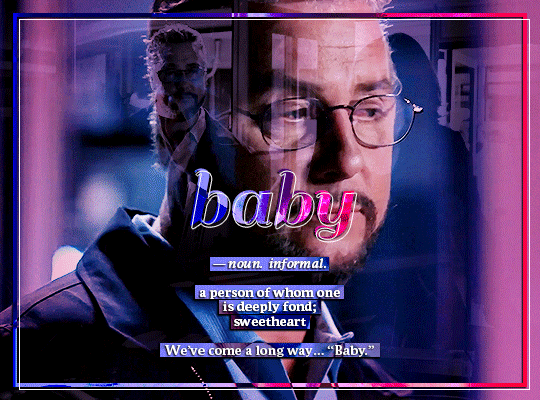
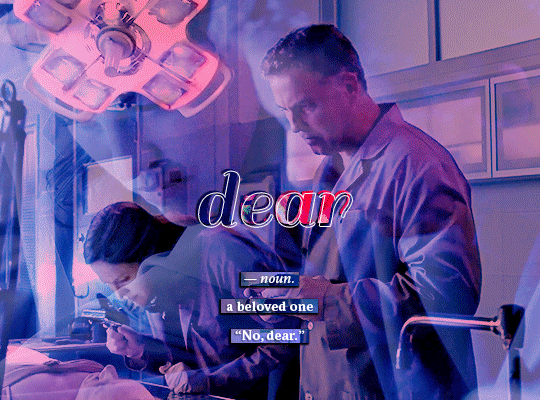
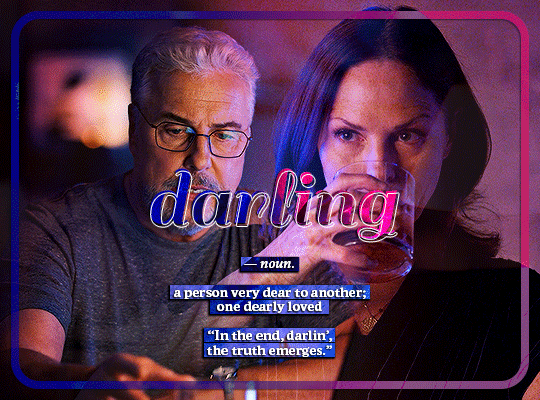

In(to) the Night: After Vegas: A Post-Credits Scene
Chapters: 5/5 Fandom: CSI: Crime Scene Investigation (TV 2000) Rating: Mature Warnings: No Archive Warnings Apply Relationships: Gil Grissom/Sara Sidle Characters: Gil Grissom, Sara Sidle Additional Tags: Canon Compliant, Nerds in Love, Romance, Fluff, i just need them to be happy, totally self-indulgent, CSI as Rom-Com, Emphasis on Rom, Don't Hold Your Breath for Com, F. Scott Would Say I'm a Sentimental Person Not a Romantic One, Science Nerds (Affectionate), emotional journey, Epilogue, they really are going off into the sunset with this one, Happily Ever After, The End Series: Part 14 of Survivors in the Night: A Las Vegas Love Story
Summary:
February 9, 2022. Back on the boat. Love + reflections under the stars. Happily ever after. 💕
“Anywhere with you.”
@ficwip #hey sweetheart
#csi#gsr#otp: gsr#sara sidle#gil grissom#hey sweetheart#this is for the final short multi-chapter fic i posted on ao3 over the last week#(until i can manage some proper cover art after the holidays)#(the holidays apparently ending after february 14 for present purposes)#ffn is getting a slower roll-out for mental health reasons#but come be excited with me on either and it will help the posting process go much more smoothly!!!#sara x grissom#grissom x sara#jorja fox#william petersen#💛: survivors in the night#survivors in the night: a las vegas love story#fic#fanfic#fan fiction#gsr fanfic#*sn posts
28 notes
·
View notes
Text
thinking about the blue exorcist changeling au, and just- everyone seeing rin's true form for the first time on that bridge on that fateful day. yukio shoots him with iron bullets, which surely would have killed an ordinary fae- but even yukio knows that his brother isn't ordinary. rin's body reacts violently, his human form dissolving and leaving behind a writhing mass of shadows, eyes and flames...
...and just as the exwires are processing the fact that that's rin, the flames blaze stronger. hotter, until they've almost completely engulfed him. it's so blinding that they have to look away- and when they look back, at first glance it seems as if rin is back to normal. he's in the form they'd thought was his true form for the longest, except-
-except shiemi can tell something is wrong.
and soon it's not just her. his chest burns, sputtering at first- and then a demon heart flares to life, blazing a bright blue. rin opens his eyes, but he's not rin- or at least, not the rin they know.
after a lifetime of being constrained, demon rin is thrilled at the chance to let his flames run absolutely wild, unbound by oberon's curse of a Name. shiemi fends him off for a short time with nee's aid, but the one who ultimately halts his rampage is a very grumpy mephisto. he spirits the now unconscious rin away, leaving the exwires with more questions than answers.
...his flames were blue.
...his flames were blue, but the fae can't be possessed by demons. so what in the world is okumura rin, actually?
(or: rin wakes up later in mephisto's bedroom with a killer headache, and fuzzy memories of the past few hours. he remembers yukio shooting him- and then things get really messy. mephisto smiles and tells him nothing, because the best way for him to discover the truth about himself is to see it with his own eyes.
...he feels different, somehow.
but in the end, though his demon heart might now be free, what oberon did to him cannot be undone- at least, not unless he takes the Name he gifted to his son back. and Oberon? oberon has no intention of doing that.)
#blue exorcist changeling au#and then they all get to see rin's true form again as the airship crumbles to pieces#in the helicopter an unknowing osceola and lucy view the shadowy multi-eyed monster that manifested out of thin air as an enemy#while lewin just grins wide in excitement at finally seeing rin's true form for himself#(osceola and lucy processing that that THING is shiro's eldest child)#the clash between the *three* aspects of rin will happen at a later date :)
18 notes
·
View notes
Text

look at the rattle/toy i just made for my niece (:
#ok to rb#bun.life#im also in the process of making a rabbit#i think that one is for me and is maybe going to be multi-media/not just crocheted#ive only started on the head tho rn. which is crocheted#tell me i did a good job 🥺🥺#also it's a koala. in case that's not clear
16 notes
·
View notes
Note
ohhh your tags absolutely intrigued me! would absolutely love to read more about your thoughts on severance as DID rep if you wanna share :)
Yessssss this is my current Roman Empire so THANK YOU so much for asking!
(spoilers ahead for the entirety of the show)
1. The switches between Innies and Outies. They're seamless - the way the camera focuses on their face changes - the fact they use a singular note to denote WHEN the change is occuring.
Some of us are programmed to switch "out" into the real world / body via music, for example. The fact that the innies are programmed to JUST the ding of the elevator makes it so they still have something musical to switch to but NOT like, a whole song with meaning is bc music, like all art, is political and even historical if you know the context in which that music was created in.
2. the fucking GLITCH NOISE when flashbacks are happening during "re"integration sickness. The fact that it's called INTEGRATION at all, honestly. Honestly this is a thing some of us experience when dissociative barriers within our mind are "failing." Like, the way it feels to watch those moments is very similar to how it feels inside our body when we get a flash of something we as a System forgot.
3. The process of Integration IRL is actually NOT the fusion of alters. It's memory sharing. It's processing trauma the body experienced via the different POVs who actually experienced / hold onto that trauma so that the Record Keepers / Body Interpreters (our personal terms for these roles) become aware of these memories, and the parts that held them can finally gain support in healing those traumas. Which is what we are seeing with the Re-Integration process. Which is why it's NOT Re-Integration. Innies and Outies clearly still remain "separate" in terms of who has control of the body depending on what environment they're in. We met Outie!Petey, not innie!Petey, for example.
4. Lumon being a Corporate Style Cult and abusing its severed employees (and NONsevered employees, when you consider the bullshit Cobel and Milkshake go through - and also Helena) is SO on par with what was previously referred to as RAMCOA. I think the term now is just Organized Abuse. Like. Harsh rules for everyone. You can see the cycle of Abuse in real time - the transference of anger. Milkshake can't retaliate against the Eagan top dogs but he CAN threaten Mark S, for example, and get WAY into his personal space to intimidate him and also fuck with him emotionally and mentally. It's SO good. It's so uncomfortable to watch but it's ACCURATE.
5. Going back to the seamless Switching. Yes, we get the camera shift and whatnot visually - but that's for the benefit of the audience. Same with the elevator ding cue. Mark S and Helly are the two best examples we have of this. There are huge ass SIMILARITIES between their Innies and Outies, yes. In terms of base personality traits and beliefs.
But Mark S wears his hair slightly different. Helena seems to prefer her hair pulled back and out of her face. These kinds of little subtle differences enhance the way ALL of the actors embody the different parts of their characters. ALL of them deserve all the awards for their acting, honestly. All of them.
6. Along those lines, the signs of bleed through or when one part is Passively Influencing the other. In ep 5 there were moments in Mark S seems to be in control but Outie Mark is bleeding through. Like, the vibe of Mark S the entirety of ep 5 isn't QUITE Mark S. Because Mark S has been violated in multiple ways at this point by Lumon - now including sexually! - and has experienced the death of one of his family members (MDR is def a family), and is grieving and confused and Mark's way of dealing with the death of someone he loves was to literally Sever himself so that there were hours of the day where he wasn't crushed by the weight of his grief.
I'm sure there's more but I just woke up (well, about an hour ago) and we have some Administrative Tasks that need to get done as well as self-care stuff bc this show is triggering in a GOOD way. It's triggering because I have experienced both what Mark S and Helly R are going through, as well as what Mark and Helena have.
The show is so good. It's so good.
#severance#spoilers#dissociative identity disorder#my dissertation as a psych major would be on this show#and how it's reminiscient of the healing process for those who are Multi#getting our ass some food and sunlight now#because we are just a really conplicated plant
28 notes
·
View notes
Text
Starter call! No caps.
#Multis specify.#Per my other blog: Disregard how bare my blog is.#I am in the process of coding a theme.
12 notes
·
View notes
Text
How should v1’s arms be drawn?
Gameplay accurate (left) or more “balanced”?

Shoulders are slightly staggered down on both, also color coded for visual clarity
#I’m still learning how to draw them#i never draw mechanics either so it’s a learning process#I was running out of pose ideas for the arms sorry#ultrakill#ultrakill v1#my art#art#fanart#honestly they’re probably stored in the wings#but I love multi-armed characters
108 notes
·
View notes
Text
The creative process of finding the best eyes for my crochet amigurumi dolls.

In 2011, I hand embroidered on the eyes for the Sheldon Cooper doll. I gave away the doll last year because I was tired of it staring through my soul. 👀 😬😂
Fast-forward to 2016, I went for the cute chibi look by using small safety eyes for my Fourth Doctor amigurumi, with sad eyebrow details.


Then when making Sandor Clegane in 2018, I crocheted an extra white piece to go behind the pupils, it came out a bit bug-eyed.
And finally with Geralt of Rivia doll, I used tapestry crochet and color changed to white yarn where the eyes would go and also used colored plastic safety eyes (in this case yellow cat eyes). And this is how I do all my humanoid dolls now, which gives them a nice realistic look. I’ve been wanting that for all my dolls, it just took me a long time to figure it out. 😅


#handmade#crochet doll#eyes#plushie#amigurumi#multi fandom#sheldon cooper#fourth doctor#sandor clegane#geralt of rivia#crochet#dolls#crafting#the creative process#arts and crafts#art doll#sculpture#fiber art#artists on tumblr#designer#jbcrochetwizard
10 notes
·
View notes
Text
Feeling mushy about how people want to play in Belarilia. I'm always happy when people like the lore I've thought-up. But this one hits right in my gooey center. And it's funny because I was always afraid certain lore pieces wouldn't be liked or would be too much but those tend to be the ones people like the most.
#the world buliding and culture building and lore pieces have been a multi-year process and i'm so glad in the last year and a half i've#found so many people that like it#* filed under — ( ooc ) ( the director the writer the sap )
8 notes
·
View notes
Text
Hogan's Heroes Christmas Carol word count: 5,346 5,556.
As you can see from the screenshot under the Read More, I've split the story into *counts* eleven parts. It's not going to be eleven chapters (I haven't decided yet if it's going to be more than one chapter), but this keeps all of the different parts and pieces organized and easy to find.
Sections with a blank white square don't have anything written in them yet, while sections with a lined white square do. I'm currently working on "Interlude in the Barracks 2," though I might skip ahead to "The Ghost of Christmas Present" because I've hit a bit of a wall with the other.
"Christmas Morning" is not actually written; I just had a couple of ideas that I wanted to jot down before I forgot them. Other than those two sections, the rest of the written-in sections are pretty much completed first drafts, though I still have to poke at them some more. As I've mentioned before, I still have to play around with Kinch's role as the Ghost of Christmas Past. I also have to add more of the mission this whole this is meant to distract Colonel Klink from. Last night I was thinking that maybe I should have instead had them do this whole morality play to try to get Klink to defect to the Allies, but then each ghostly sequence would have had to look very different and probably touch on things that I'm not going to put in a Hogan's Heroes fan fiction. So...completely over-the-top distraction from a mission it remains!

#original post#Hogan's Heroes#A Christmas Carol#Teddy Bear writes#the writing process#I have no idea why the icon for the second section has the corner folded over#if I do post this as a multi-chapter I'll probably combine the sections in twos#with Christmas Morning being the odd one out#it really depends on when I finish the whole thing#and how much time I have to post it before Christmas#because I'd like to have the whole thing up by then
13 notes
·
View notes
Text
I have like over a hundred fic drafts from different fandoms rotting in my notes app but I have never ever finished writing even a single one of them which means they can’t really be posted anywhere. lately I’ve been really considering just making mini comics based on my writing and posting what’s written with them so it all seems kinda coherent. I dunno, could be pretty fun??
#me and my terrible habit of creating an elaborate idea and writing 11k words for it then just not ever coming back to it again#I don’t have much interest in regularly posting my writing anywhere and it’s something I do more for myself than anything. but there are#a few solid ones in there that I think would kill as multi-page comics#also gives me a really great opportunity to infodump about my writing process for each thing I make#could be funnnn who knows
13 notes
·
View notes
Text


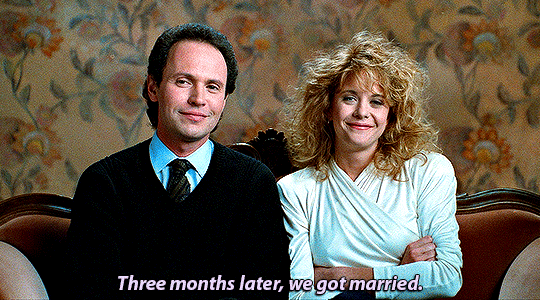


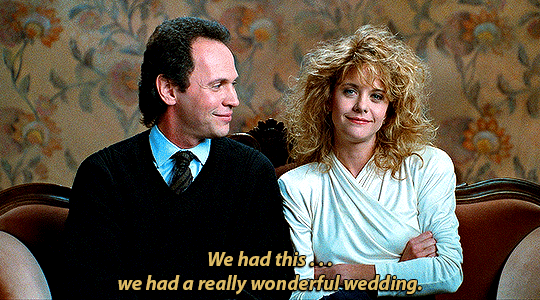
Survivors: Vegas, After the Roller Coaster: An Epilogue
Chapters: 4/4 (+ soundtrack listing) Fandom: CSI: Crime Scene Investigation (TV 2000) Rating: Mature Warnings: No Archive Warnings Apply Relationships: Gil Grissom/Sara Sidle Characters: Gil Grissom, Sara Sidle Additional Tags: Canon Compliant, Nerds in Love, Romance, Fluff, i just need them to be happy, totally self-indulgent, CSI as Rom-Com, Emphasis on Rom, Don't Hold Your Breath for Com, F. Scott Would Say I'm a Sentimental Person Not a Romantic One, Science Nerds (Affectionate), emotional journey, Epilogue, I’m really pleased with the WHMS tie-in in this one Series: Part 13 of Survivors in the Night: A Las Vegas Love Story
Summary:
Individually and together, Sara Sidle and Gil Grissom reflect back upon their roller coaster ride—both literal and metaphorical. 💕🎢 Set during and (mostly) just after the end of season 1 of CSI: Vegas.
“We’ve survived a lot. It’s definitely been an adventure. But I wouldn’t want it any other way.”
#csi#gsr#otp: gsr#sara sidle#gil grissom#this is for the short multi-chapter fic i posted on ao3 over the last week or two#(until i can manage some proper cover art after the holidays)#(the holidays apparently ending after february 14 for present purposes)#ffn is getting a slower roll-out for mental health reasons#but come be excited with me on either and it will help the posting process go much more smoothly!!!#sara x grissom#grissom x sara#jorja fox#william petersen#💛: survivors in the night#survivors in the night: a las vegas love story#fic#fanfic#fan fiction#gsr fanfic#spoilers: when harry met sally#*sn posts
14 notes
·
View notes
Text
I want to put these 3 characters in a room together just to see what would happen



But if I did that and it was just these 3, it's entirely possible they'd all just sit there in silence and do their own thing, so to make sure they'd talk I'm also putting her in the room with them too
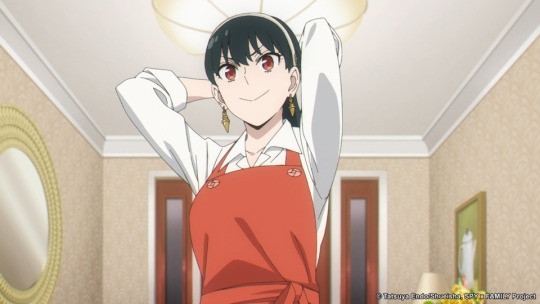
#a little scared to put tags on this#but ive been thinking about it so much for so long long#this is such a self indulgent thought process though and im not sure if theres anyone else out there who would know who all four of them are#if you do know all of them#bro hit me up???#i would LOVE to talk to you about them#multi fandoms posts#tokyo mew mew new#hilda netflix#pokemon horizons#spy x family
55 notes
·
View notes
Text




Felt nostalgic, you are forced to admire the art styles that came from my childhood.
#I actually recently found out that club penguin had two other tc specials that I was somehow not aware of#then again I started to drift away from it after that year#I absolutely adore Lauren Child’s art and process#I just miss the excessive details and multi media in shows man#vio.txt#nostalgia
16 notes
·
View notes
